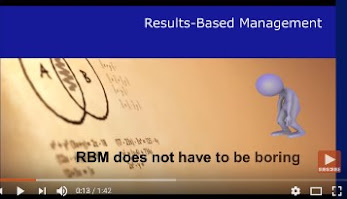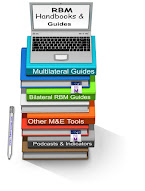by Greg Armstrong
[Updated July 2018]
A “Guide for Project M&E” produced in 2002 by the International Fund for Agricultural Development and written in clear language, still provides solid, practical, and actionable advice on the design, and implementation of a Monitoring and Evaluation system. The RBM tools provided here, although replaced in new and updated guides, remain useful for project design, planning, monitoring, reporting or evaluation, in 2018 or beyond.
[Updated July 2018]
A “Guide for Project M&E” produced in 2002 by the International Fund for Agricultural Development and written in clear language, still provides solid, practical, and actionable advice on the design, and implementation of a Monitoring and Evaluation system. The RBM tools provided here, although replaced in new and updated guides, remain useful for project design, planning, monitoring, reporting or evaluation, in 2018 or beyond.
Level of Difficulty: Easy to Moderate
Length:378 pages
Languages: English
Primarily Useful For: Planners, evaluators, monitors, managers
Most Useful: “Navigating the Guide” identifies sections of use to different readers
Limitations: Originally produced in English, French, Spanish and Arabic, this guide has been replaced by new and updated M&E guides, and only the English language version of this 2002 edition is easily available.
Background
In November 2013 I worked briefly with IFAD Vietnam, helping them develop a simple reporting format for their projects. I was struck then by the practical nature of the discussions, working with participants who were literally grounded in the realities of rural development, and with the interest IFAD staff take in developing workable tools for project management.
It was then that I first came across the IFAD Guide for Project M&E, written by Irene Guijt and Jim Woodhill. It is something I regret not seeing when it was first produced in 2002. The fact that it was produced 12 years ago does not, however, detract from its ongoing utility.
Who This is for
While those getting the most obvious benefit from this RBM guide will be IFAD staff, partners and consultants working with them, the basic ideas and the clear organization of the document will make if useful for programme and project planners, monitors, evaluators, and field staff working with any organization,who are trying to figure out how to make something practical out of the usual donor results-based management technical terms. The primary target audience for the document is obviously going to be people who focus on agriculture, food production and associated activities, and while they will know a lot about those topics, they, like most people, will not want to wade through, nor are they likely to remember, pages of donor-specific RBM jargon.
This 2002 Guide is written in relatively clear language, [and in 2018 I find it remains more user-friendly than the more recent guides] and while it does refer to some basic RBM terms, it is easy to get past this. The terminology different donors use in Results-Based Management change with the winds of management fashion, but underlying the jargon, if you can find them, are some basically simple ideas. This document presents these basic ideas well.







